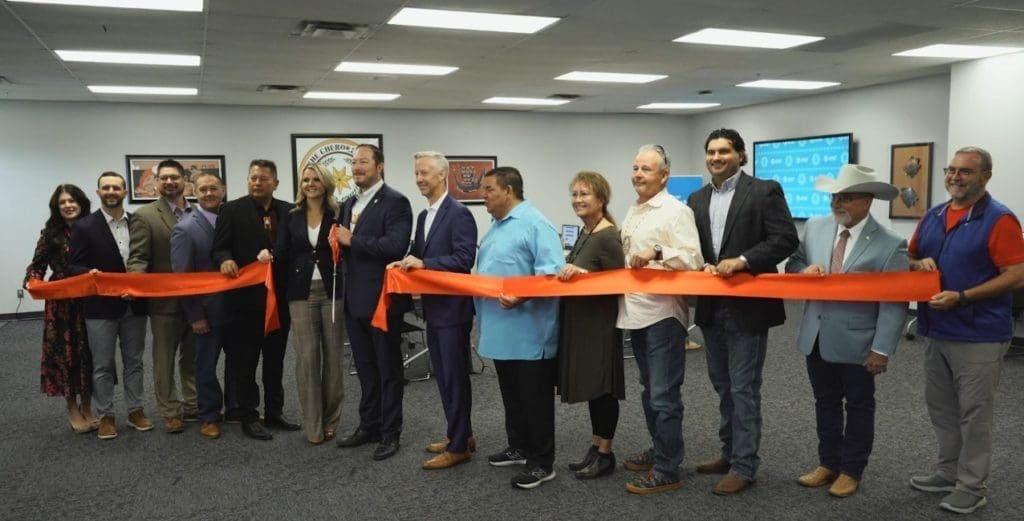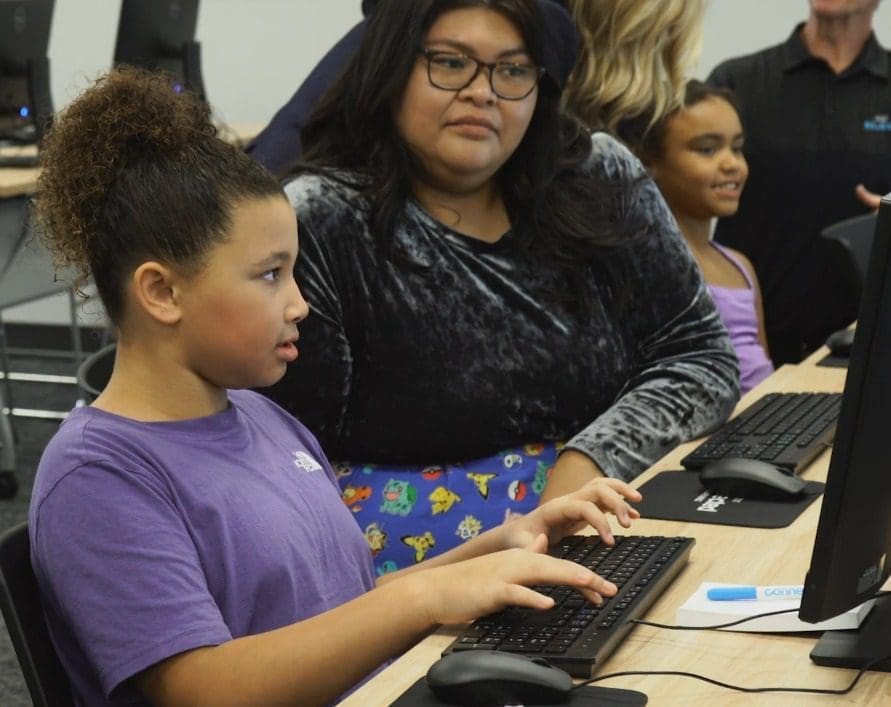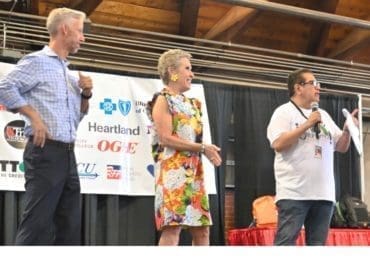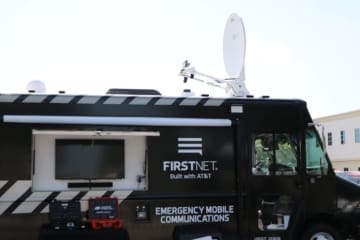In the heart of the Cherokee Nation, stories of resilience and opportunity reveal how lives are touched by the transformative power of connectivity.
I was inspired to stand alongside Tribal leadership, citizens, and state and local officials as we celebrated the opening of a new AT&T Connected Learning Center® on the tribal lands of the Cherokee Nation Reservation, located in Catoosa, northeast of Tulsa, Oklahoma.
Within the Cherokee Nation Reservation, it’s estimated at least 6,000 Cherokee citizens don’t have access to the internet or computers at home. This lack of connectivity isn’t unique to the Cherokee Nation Reservation, but is common among rural tribal communities. To help bridge the digital divide, the newly opened center at the J.W. Sam-Gadusi building in Catoosa marks AT&T’s first CLC for the Cherokee Nation and the 28th Connected Learning Center we’ve opened nationally. Excited to build on this momentum, we also provided a $50,000 contribution toward the new Connected Learning Center.
And thanks to our wonderful collaborations with Dell, which donated all of the computers, and World Wide Technology, which donated their time to provide IT support for imaging and installing the computers, the center is more than a space for connection; it enables residents of the Cherokee Nation to tap into endless possibility.
More than four walls
The opportunities that arise with connectivity are evident after listening to the stories of residents of the Cherokee Nation, like Erlinda Soap (tribal name Dagasi), a first-generation college student who completed her college degree on her cellphone. I was reminded of the pivotal role that access to online resources and technology plays in shaping futures. The new Connected Learning Center enables determined students from tribal communities, like Erlinda, to access computers and the internet, empowering them to excel in school and beyond.

Similarly, Cathy Cooper, a family case worker in the Cherokee Nation’s Veteran Affairs office, emphasized the need for digital literacy workshops across the reservation as many residents grapple with navigating the digital landscape. Cathy shared the story of a veteran woman, patiently waiting for a laptop that would enable her to excel in her upcoming call center job. With the center’s full-time digital navigator, residents can receive one-on-one digital skills training and app and device support. These examples underscore how Connected Learning Centers can improve access to both employment opportunities and essential skills, enabling full participation in today’s online world.
Connectivity doesn’t just transform lives; it saves them. Arielle Barnett, a passionate advocate living and working on the Cherokee Reservation, stands alongside fellow residents in emphasizing the need for adequate healthcare access. Now, residents can seamlessly connect to telehealth and other essential services through the center, potentially saving lives in crucial moments
It’s exciting to open our first digital learning center with AT&T to ensure connectivity and access remain a priority within the Cherokee Nation Reservation,” Cherokee Nation Principal Chief Chuck Hoskin Jr. said. “Having someone dedicated to help our citizens manage the technology and tools they need will provide better access to employment opportunities, school, health care and services for our people. Deputy Chief and I and will continue to eliminate gaps, build more cell towers and bring high-speed internet and cell service to more Cherokee communities over the next three years.”
The launch of the CLC represents our steadfast dedication to broadening connectivity for the Cherokee Nation. Earlier this year, the Cherokee Nation built a cell tower in the Cherokee community of Kenwood. We worked together to expand 5G connectivity and improve overall public safety through FirstNet®, Built with AT&T – the nation’s first responder network.
And the impact is already palpable. For Agalisiga Mackey, the Kenwood tower is not a simple cell tower; it’s a lifeline. In emergencies, a quick phone call replaces what was once a 5-mile journey to get help. Connectivity also provides peace of mind. Young mother Paloma Lopez shared that since the tower has gone up, she can now easily check in with her son while he’s at daycare with her grandmother, a resident of Kenwood. Agalisiga and Paloma’s stories illustrate how immediate access to assistance transforms challenges into solutions, emphasizing the significance of connectivity in life’s everyday emergencies.
Further connecting Tribal communities
As part of our effort to connect more Tribal communities, we’ve expanded our coverage in places such as the Yankton Sioux Tribe in South Dakota. This year, we’ve also opened two Connected Learning Centers in California: one on the Rincon Reservation and another on the Pinoleville Pomo Nation in Ukiah.
We understand that for the Cherokee Nation, and many tribal communities, affordability is a barrier to getting online. That’s why we’re working to make internet access more affordable for low-income households. With the Access from AT&T, eligible households on qualified Tribal lands that take advantage of the up to $75 per month Affordable Connectivity Program (ACP) federal benefit (and apply it to their Access from AT&T plan) can then receive internet service at no monthly charge.1
The stories told from the hearts of residents of the Cherokee Nation echo a resounding truth: connection changes everything. It bridges gaps, transcends barriers, brings communities together, and empowers individuals to learn and thrive. The new Connected Learning Center isn’t merely a symbol of progress; it attests to the strength, aspirations and potential of every resident of the Cherokee Nation. By harnessing the power of connectivity, we broaden opportunities across the state, ensuring a brighter future for every Oklahoman.
1 Plans up to 100Mbps. Limited availability/areas. Free internet subject to household’s continued ACP eligibility and application of the ACP benefit to Access from AT&T plans.




